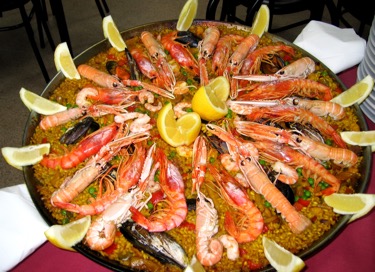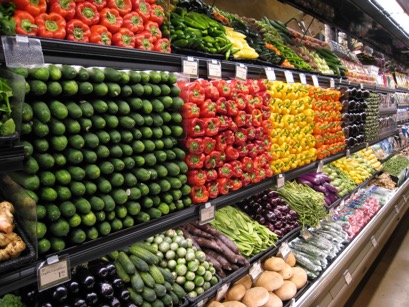How influencing Maximisers can also convert Satisficers
Relevant topics Archive, Conversion
I Love cooking!
I literally spend hours in the kitchen every weekend preparing meals for my wife and kids;
and there is nothing more rewarding than watching them enjoy the meal so much that they ask for more.
I am not a chef, but there is one essential thing in cooking: high quality ingredients are necessary to bring out the authentic flavours of any dish.
So, what does my cooking have to do with neuromarketing? Well, everything!
More than the cooking itself; the connection lies in how my wife and I shop and pick items when we want to prepare a meal.
Satisficers: where it all begun.
In his study; Wen Mao from the Southwestern University of Finance and Economics (Liulin Campus) , describes two specific groups of ‘choosers’. The bigger of those groups being, the ‘satisficers’
They are your average shopper.
They look for an item that they want, subconsciously calculate a potential trade-off between similar items with slightly different characteristics and then pick the one that's "good enough" for them.
They are easy prey to tactics like the decoy effect, special offers or current craze.
And my wife is their Queen.
As all satisfiers; when she shops, she considers a few factors before deciding what to buy.
Let's say for example, we’re cooking a paella valenciana, bear with me on this one, as I give quite a few examples. They'll make more sense as we compare them to my shopping.

She'll pick the cheapest rice, and get 3 packs as it's a buy 3 pay for 2 deal;
Then she'll look at the largest chorizo sausage she can find because she knows I love it, and she already saved on the rice, so price is not an issue;
Then it's time for the prawns, here she'll go for frozen ones as she doesn't like them anyway and has no idea how to pick good ones;
For the tomato sauce, she will choose the generic one as she says "they all taste the same";
For the chicken - she will usually fall prey to the special offers and we will end up with enough chicken to survive a nuclear winter; but only if the package is black as I noticed she seems to be convinced that a darker packaging means superior quality, based on the fact that the value chicken is sold in white packaging.
My guess is that most readers will identify with how my wife shops.
That means you are also a satisficer.
But did you notice the subtle tradeoffs she makes when shopping?
Rice: lower price + special offer won over quality;
Chorizo: Affective effect + savings from rice won over price;
Prawns: safety won over uncertainty;
Chicken: belief bias + special offer won over price.
For each ingredient she made an instinctive calculation in order to make her choice.
This is exactly what most shops, online and offline, capitalize on:
People will pick up on specials, or specific items, or supposedly-higher-quality products - some of which can be predicted with the help of some simple neuroscience tactics.
Of course ‘current crazes’ have a strong influence too; (see the Kale craze of 2014 or the Juicers fad of 2012) and as they are rarely based on science, they are completely unpredictable.
You might say:
"If a clever shop or online seller can pick up on these things they can take advantage of them before it's too late"
That's the absolute truth.
But it's not always that easy.
Enters the Maximisers.

While shopping with my wife is quite easy and not a bad experience; shopping with me is in her words, "A nightmare!".
And I know exactly why. I am her polar opposite when it comes to shopping: I am a ‘Maximiser’ and nothing is ever good enough. Nothing.
Let's stick to our paella, to illustrate how our shopping differs:
Rice: I exclusively cook with arborio rice, as it's thicker and it doesn't stick; but the price must be within the average of all the other types of rice, so I look at the price per kg that's usually shown under each rice pack. By doing this I also don't get tricked by “specials” that won't save me a dime.
Chorizo: It should smell like chorizo, not plastic. Colour must be a dark red, if too bright then it means it's too fatty. Pricing should be appropriate to its size, not £10 for a nice sausage. If I can't find what I am looking for, I won't buy it.
Prawns: I like King Prawns, whole, at least 4 per person; hence I skip the frozen isle and go straight to the fish counter. I am usually willing to pay a bit more for fresh fish as it tastes completely different to the frozen variety.
Tomatoes: I will only buy tinned cherry tomatoes, as they are sweeter than regular sauces and cost about the same.
Chicken: To me, the packaging is irrelevant. Unless I can go to the farm and get the chicken, I mistrust all the free range labels, so it is down to price and offers.
As you can see, my shopping experience differs greatly to my wife’s:
1 There are no trade-offs;
2 I take advantage of specials based on my needs, not on my greed;
3 If I don't find what I am looking for, I won't settle for the next best.
This last point is the most important to remember as it's the most difficult to deal with in an online environment - how to recognise a Maximiser.

Maximisers have some basic behavioural patterns that distinguish them:
1 They won't convert the first time they visit your site;
2 They will compare multiple sites and products before choosing;
3 They are almost exclusively coming to your site via search, even if they've seen your ads online, as they will seek info about your store before approaching you;
4 They are only loyal to their beliefs, so while you are their top choice, they'll buy. But they will always be looking for something better;
5 They are easily irritated by websites with bad search and sorting options.
Maximisers and Satisficers, how can you convert both and make this article work for you.
This is probably one of the main reasons why personalisation tools should be plugged into your website.
Use them to track your visitor's behaviour and learn to identify Satisficers and Maximisers, then see what type of user performs best in your current store.
Once you answered this question, there's 2 strategies available to you:
1- If you can identify them early in your conversion funnel, trigger personalised messaging, offers and product suggestions tailored to the type of user they are;
2- If you can't identify them early enough, decide which type of user to focus on and run an a/b test to see if your revenue-per-visit increases that way.
Another approach would stick to a simple idea: the Maximiser mindset has requirements that would also work for the Satisficers, then tweak your website to cater for them, here's some suggestions:
Make it easy to search and sort: a visible search bar is a necessity for these users; plus sorting options should be complete and simple to use (Amazon's approach to this is a great example).
Allow users to compare products: don't force them to hop from tab to tab to compare your products or they'll get tired and leave. Having a comparing option will also focus their attention on YOUR products and reduce the bounce rate.
Offer a best price match: matching a competitor's price is a simple trick that will minimise the factors down to only the user’s experience. If it's all about the user’s experience (keeping in mind the 2 previously-mentioned tips), maximisers will stick around longer.
Make your offers count: attraction effect, decoy effect, 3for2, bandwagon effect, specials etc. won't affect a maximisers; they come to you on THEIR terms and buy on THEIR terms, so any offers should be tailored around THEIR needs.
My suggestion would be to test a free shipping offer for the product with the highest margin if they are using your comparative option, or a free trial period/free return to test your product.
Conclusion
Satisficers: with their trade-off attitude when making a choice, are essential to deliver top offers and trendy products. They are the majority of the population and are the average type of person that visits your site and clicks on your ads.
Maximisers: on the other hand are a bit more difficult to coax. Ads and special offers have limited to no affect on them, but they’re essential, as they force us to look for ways to offer an above-average service; online and offline, improve navigation and be more honest and forthcoming with our promotions.
Keep this in mind: a website that can hold the interest and convert maximisers will be perfect for satisficers too. It will help them find product easily, reducing the need to go look elsewhere, and they are easy prey to special offers. So there really is nothing to lose.
Further Reading
-
The Sunlight Effect: How daylight might make you money…
Economic theory predicts that people’s spending activities do not vary with environmental conditions, such as seasons and weather-related factors. As neuromarketers, we know better than that. It’s hardly surprising we all pay more for ice cream during the summer and the sales of ice cold beers skyrocket when there’s more sunlight. The price dynamics of these nondurable goods make economic sense in the light of increasing demand. However, you wouldn’t expect to find such patterns in durable goods like art, but that’s not what science discovered…


